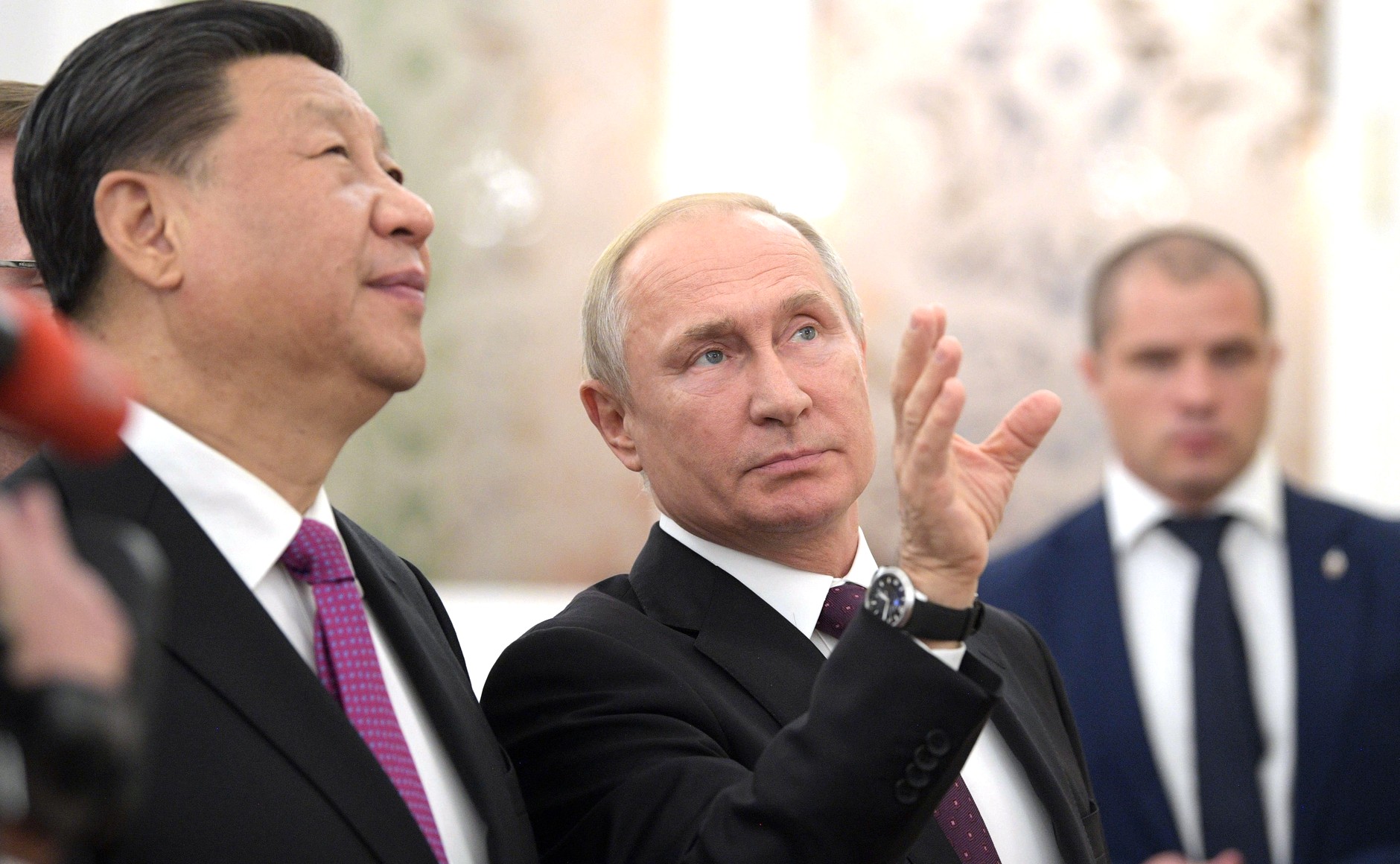How China and Russia try to challenge the dominance of the dollar

China and Russia want to create a multipolar monetary order less dependent on the US dollar. Here's what they're doing. The Financial Times article
This month, Russia and China are stirring up fresh fears in Washington. This is mainly due to their spectacularly managed diplomatic unit displays around Ukraine and much more. Writes the Financial Times .
But it's also a matter of money: during Xi Jinping's visit to Moscow last week, Vladimir Putin pledged to adopt the renminbi for "payments between Russia and the countries of Asia, Africa and Latin America ”, in an attempt to replace the dollar.
This comes as Moscow is already using the renminbi increasingly for its growing trade with China and adopting it in its central bank reserves to reduce its exposure to American "toxic" assets.
It's important? Until recently, most Western economists would have said "heck, no." After all, the closed nature of China's capital account has long been assumed to be a barrier to wider use of its currency.
But right now Putin's announcement carries an unusually emotional weight. One reason is that there are concerns that this month's US banking turmoil, inflation and the looming debt ceiling battle will make dollar-based assets less attractive. “The dollar is being debased to finance bank bailouts,” thundered this week Peter Schiff, a libertarian economist, echoing a widespread opinion on the American right.
Meanwhile, Jim O'Neill, the former Goldman Sachs economist who launched the "Brics" label (short for the Brazilian, Russian, Indian and Chinese bloc), published a paper this week in which he argues that "the dollar plays too dominant a role in global finance” and calls on emerging markets to reduce their risks.
But the other factor of concern is that, even before Xi's visit to Moscow, the Saudi government announced that it will start invoicing some oil exports to China in renminbi. In addition, France just made its first sale of liquid natural gas in renminbi and Brazil has adopted this currency for some of its trade with China.
There is absolutely no sign that these symbolic gestures are hurting the greenback right now. It is true that the dollar's share of global reserves has fallen from 72% in 1999 to 59% as central banks increasingly diversify their investment funds and move away from currency constraints. It is also true that the advent of central bank wholesale (bank-to-bank) digital currencies could theoretically accelerate this diversification, making it easier for non-US central banks to deal directly with each other in their own currencies.
But the dollar still dominates debt markets, and the volume of dollars held abroad has increased this century. A surprising and overlooked detail of this month's turmoil is that the currency has maintained its "near record strength against G10 and emerging market currencies," as Robin Brooks, chief economist at the Institute for International Finance, recently tweeted.
Indeed, during the recent crisis, so many global investors wanted to grab the greenback that the Federal Reserve launched a daily swap program with other central banks. "This increased use of dollar swap lines will, ironically, further strengthen the global dollar system and its powerful network effects," predicts David Beckworth, a researcher at the Mercatus Center at George Mason University.
In other words, the dollar may not deserve to win any beauty pageants right now, given America's fiscal woes, but many investors still see it as the least ugly option in a very ugly world, thanks to this effect. networks and the fact that the euro and renminbi capital markets are respectively shallow and closed.
However, before anyone concludes that this means that Putin's threat can be completely ignored, they should take a look at some interesting research on commercial billing published last year by the Center for Economic Policy Research.
A decade ago, another factor behind the dollar was thought to be the "stickiness" of commercial billing models, noted IMF deputy director Gita Gopinath. But the CEPR document suggests that this situation is slowly changing: as Chinese trade has expanded in recent years, so has the use of the renminbi.
So much so that it now outpaces the use of the euro for commercial invoicing, which is "surprising given China's low capital account openness," CEPR says. And he argues that “contrary to conventional wisdom, the lack of capital account openness may not entirely prevent the renminbi from playing a stronger role as an international and reserve currency.”
After all, notes the CEPR, a $200 billion offshore renminbi market has already emerged and the currency is "used for invoicing and settlement of China's foreign trade and payments" and for "a global clearing and payments network." ”.
The net result, the CEPR predicts, is that a “multipolar” currency world, of the kind O'Neill advocates, could emerge in the coming years. It would not be as dramatic a change as Putin or Xi would like to see, or as alarmists in Washington fear.
But, in my view, it seems like a sensible bet in the medium term. And even a "simple" multipolar model could come as a shock to US policymakers, given how much the US needs external funding. So investors and policymakers alike will need to keep an eye on the details of the commercial billing in the coming months. Putin's bluster may prove futile, but it could also be a straw that breaks the camel's back.
(Excerpt from the press release of eprcommunication)
This is a machine translation from Italian language of a post published on Start Magazine at the URL https://www.startmag.it/mondo/cina-russia-contrasto-dollaro/ on Sat, 01 Apr 2023 05:27:56 +0000.
